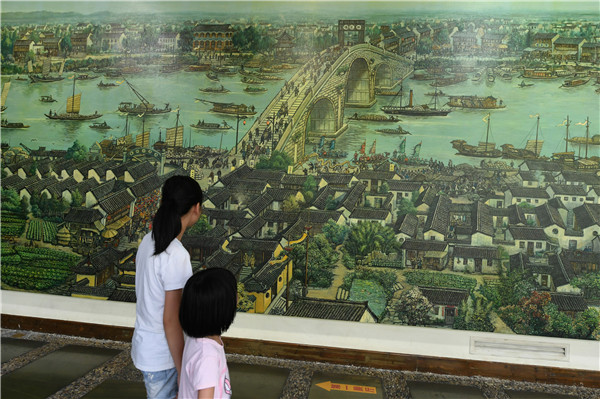The Grand Canal: A Chinese cultural conduit
( Xinhua ) Updated: 2017-08-05 07:44:36
 |
|
Local governments along the canal are coming up with all sorts of measures to protect this cultural gem. [Photo/Xinhua] |
Like silk and porcelain, tea was once an important cargo transported on the canal. So, tea dealers from different parts of the country gathered at Gongchen Bridge, and set up a business association.
Zhou says the association was also a charity that would give food to vagrants and prepare coffins for those who died in poverty.
"People on the dock, no matter where they came from, whether rich or poor, were all willing to give," says Zhou.
Today, the hustle and bustle at Gongchen Bridge is long gone, but its spirit of openness and philanthropy is part of local culture.
Zhou now runs a tea house which has been offering free Laba porridge to local residents for the Laba Festival for the past six years.
Also on the Grand Canal is the city of Suzhou, sometimes called the "Venice of the East" for its waterways.
Andrew Shaw, once a BBC reporter in Britain, found his spiritual home in the Chinese city.
Nine years ago, Shaw, mesmerized by jade, quit his job and moved to Suzhou to become a jade carver.
Since the Qing Dynasty (1644-1911), Suzhou has been the center of jade carving in China, and local craftsmen would travel to Beijing, using the canal, to serve the emperors.
|
|
|
|
|
|
|
|

























 Raymond Zhou:
Raymond Zhou: Pauline D Loh:
Pauline D Loh: Hot Pot
Hot Pot Eco China
Eco China China Dream
China Dream China Face
China Face






